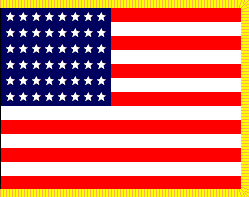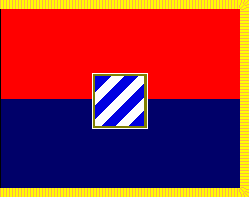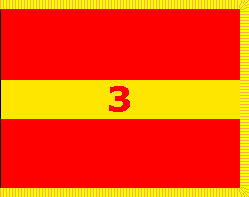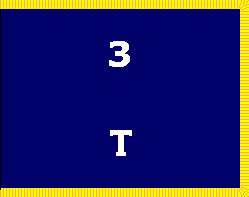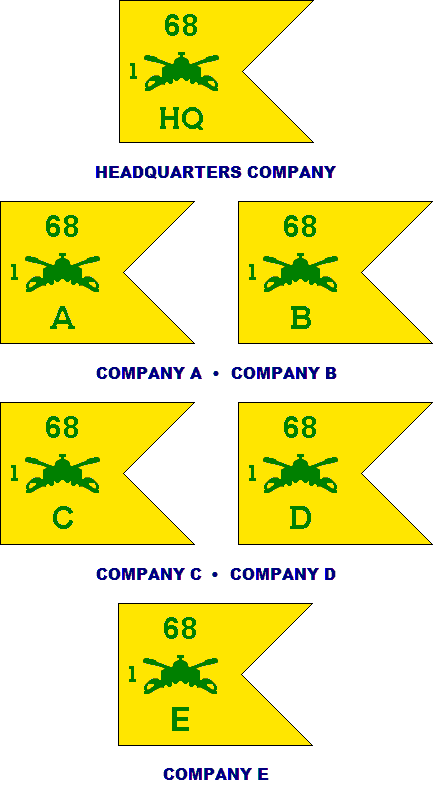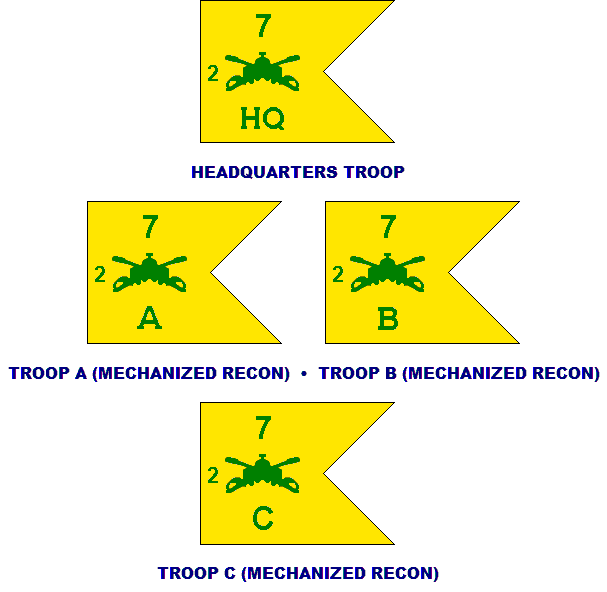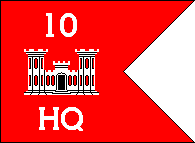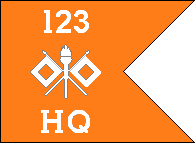|
|
|
|
3rd INFANTRY DIVISION Cold War Era • Pentomic Organization • 1959 |
The Pentomic division organization was an attempt to reconfigure the US Army for the atomic battlefield. The traditional "triangular" structure of the infantry division—three infantry regiments, each with three battalions—was replaced by a "pentagram" structure: five infantry battle groups, each with five rifle companies, each company with five platoons, plus a combat support company, as shown below for the 2nd Battle Group, 4th Infantry. This abolished the infantry regiment as a tactical unit but to preserve tradition the Combat Arms Regimental System (CARS) was introduced. Under CARS each infantry battle group and battalion, armor battalion, cavalry squadron and field artillery battalion had a regimental affiliation. The Pentomic division also had a medium tank battalion (five tank companies equipped with the 90mm gun-armed M48 tank) and a mechanized cavalry reconnaissance squadron (three troops equipped with the 76mm gun-armed M41 tank and the M59 armored personnel carrier). The infantry battle groups and armored units, along with a combat engineer battalion and a signal battalion, were controlled by the division headquarters. Division Artillery initially consisted of one 105mm howitzer battalion with five firing batteries and one composite, nuclear-capable howitzer/rocket battalion. This was found to be insufficient and in 1959 the five-battery 105mm howitzer battalion was replaced by five howitzer battalions, each with one 105mm and one 155mm battery. Two of these battalions were self-propelled and three were towed. Supply, transportation, aviation, administrative and medical support units were controlled by the Division Trains headquarters. The first Pentomic unit was the 101st Airborne Division, reactivated and reorganized in 1956, and by 1958 all infantry and airborne divisions of the Active Army had been converted. A start was also made on converting divisions of the Army Reserve and Army National Guard. But problems soon emerged. The Pentomic infantry division was supposed to be more mobile and flexible, hence less vulnerable to atomic attack, than the old triangular division. In practice, however, the elimination of the regiment/battalion structure created serious command-and-control problems. The division headquarters was too small to exercise effective direct control over so many subordinate units, and battle group commanders found it equally difficult to control five rifle companies. Logistical support was another weak spot. The Pentomic division's scheme of employment dictated a wide dispersal of combat units so as to minimize the effects of atomic attack, but this made them very difficult to supply. By 1962 it was obvious that the Pentomic concept was a failure and the Army scrapped it in favor of a three-brigade organization. Distinguishing flags for Pentomic divisions and their major subordinate units were made of silk or a silk-like material; dimensions were 3 feet at the hoist by 4 feet on the fly plus 2 1/2-inch yellow fringe. Campaign and unit decoration streamers were always displayed with these flags. Distinguishing flags were always carried or displayed with a National Color of the same material and dimensions. Company, battery and troop guidons were much the same as those in use nowadays, though at the time cavalry units were part of the Armor branch and carried the yellow/green Armor guidon. Guidons were made of cotton or wool bunting; dimensions were 20 inches at the hoist by 27 inches on the fly with a 10-inch fork. Note: Active links in descriptions point to pages depicting the guidons of subordinate units. To view the guidons of the infantry battle groups, follow the link at the foot of this page. Images Added March 2009 1st Medium Tank Battalion, 68th Armor • 2nd Reconnaissance Squadron, 7th Cavalry |
|
|
